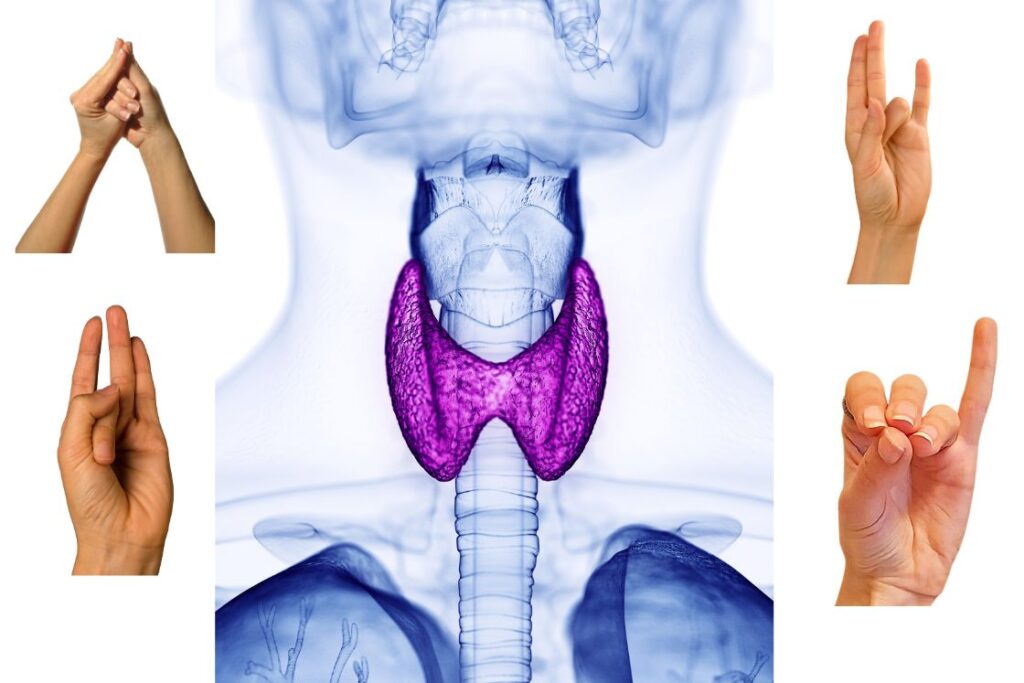
In yoga, mudras are symbolic hand gestures used to direct the flow of energy within the body. These simple yet powerful gestures can influence various organ systems by activating specific pressure points in the hands.
One of the areas that responds well to mudra practice is the thyroid gland. Located in the neck, the thyroid plays a crucial role in regulating metabolism, energy levels, growth, and overall hormonal balance. When it becomes overactive (hyperthyroidism) or underactive (hypothyroidism), it can lead to several health challenges.
In this article, we’ll explore four effective yoga mudras that support thyroid health. You’ll learn how each mudra works, its specific benefits for thyroid function, and step-by-step instructions to practise them safely and effectively
How can mudras help with the thyroid?
Mudras can support thyroid health by stimulating energy flow and activating specific pressure points on the hands that are linked to the thyroid gland. When you practise certain hand gestures, they help direct prana (life energy) to the throat region, where the thyroid is located. This can help balance the gland’s function, whether it’s underactive (hypothyroidism) or overactive (hyperthyroidism).
Regular mudra practice also helps reduce stress and calm the nervous system. Since stress is a common trigger that can worsen thyroid symptoms, using mudras as a relaxation tool may help ease fatigue, mood swings, and other related issues. Over time, this combination of energetic stimulation and emotional balance can support overall thyroid well-being.
The Ayurvedic view
To understand how mudras can help manage thyroid issues, it’s helpful to look at it from an Ayurvedic perspective.
In Ayurveda, thyroid problems are often linked to imbalances in the three doshas; Vata, Pitta, and Kapha. These doshas are formed by a combination of the five elements Space, Air, Fire, Water, and Earth and govern various functions in the body. When the doshas fall out of balance, it can lead to physical or mental health issues, including problems with the thyroid gland.
Mudras are believed to balance these elements by stimulating specific energy points in the fingers and hands. Each mudra influences a different element and can help restore balance to the doshas, thereby supporting the body’s natural healing system.
For example:
- Gyan Mudra helps balance the Vata dosha, which is often linked to nervous system disorders and hormonal imbalances, including hypothyroidism.
- Prana mudra is useful for balancing the Kapha dosha, which is associated with heaviness, sluggishness, and low energy common symptoms in thyroid conditions.
By practising the right mudras, you can support thyroid function naturally by harmonising the doshas and promoting overall well-being.
Yoga mudras for thyroid

If you’re suffering from thyroid, then practising mudras linked with the middle and index finger are beneficial. These mudras focus on the “ether” and “air element” of the body which is mainly associated with the throat region where the thyroid gland is located.
Udana mudra, shankh mudra, and shunya mudra are three hand mudra that has been found to be particularly beneficial for thyroid health. By practising these mudras regularly, individuals with thyroid conditions can potentially improve their symptoms and promote balance in the body’s energy system.
Mudras for thyroid should be incorporated with Ujjayi breathing for better results. The practice of Ujjayi increases the efficiency of the endocrine system, which is responsible for the production and regulation of hormones, including those related to the thyroid gland. To get the most benefits from mudras for the thyroid, it is recommended to practice them daily for at least 15-20 minutes.
1. Udana Mudra
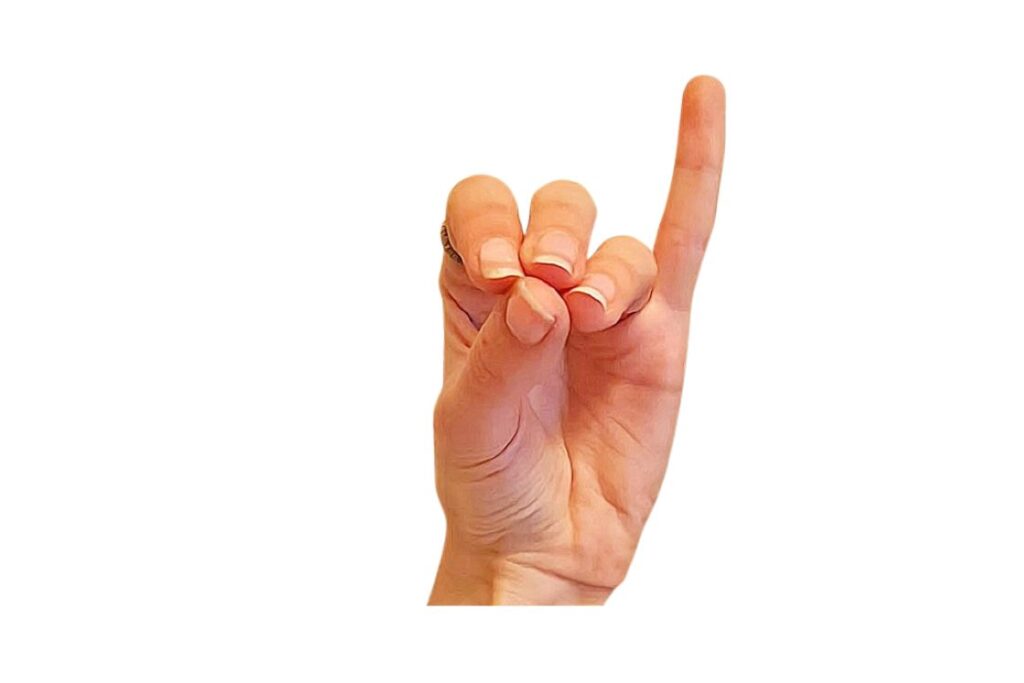
Udana mudra helps to balance the throat chakra, which is associated with the thyroid gland. This mudra stimulates the thyroid gland and regulates metabolism, which can be helpful for both hypothyroidism and hyperthyroidism.
Procedure: Udana mudra is formed by touching the tips of the index finger, middle finger, and ring finger together with the thumb tip while keeping the little finger. Practice this mudra for thyroid with both hands for 10 minutes every day.
2. Shankh Mudra
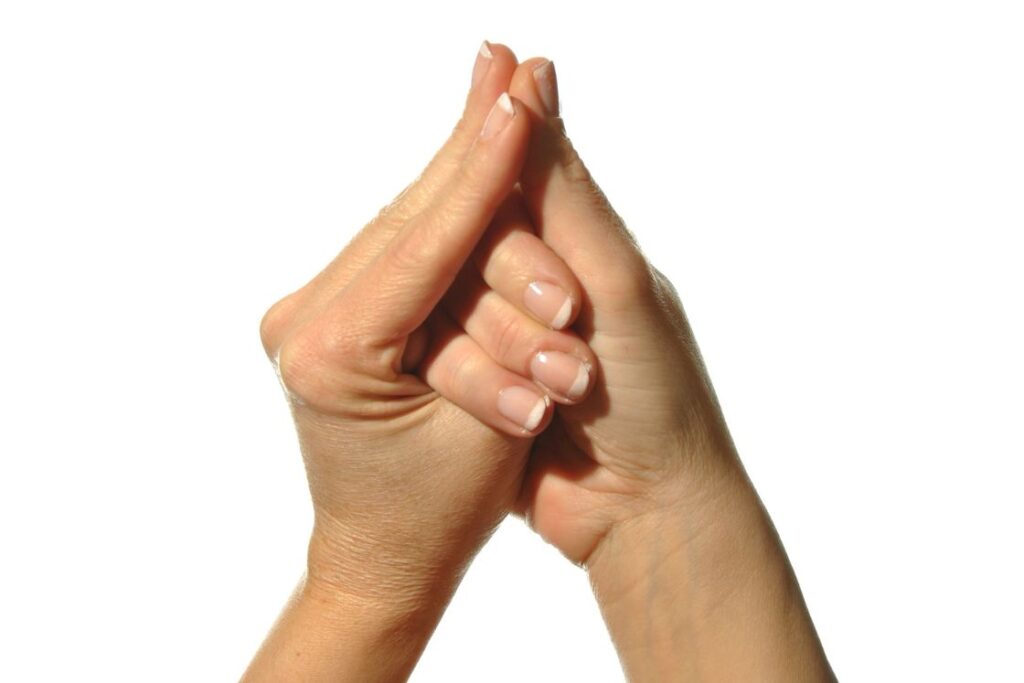
Shankh mudra involves reciting the meditative sound of OM, which produces vibrations that stimulate the Thyroid gland. Thyroid gland secretes the hormone thyroxine, hence the consistent practice of Shankh mudra with OM chanting can relieve hypothyroidism. Therefore, Shankh mudra is considered very helpful for thyroid disorder patients.
To practice Shankh mudra effectively for thyroid problems, one should follow these steps:
- Sit comfortably in a Vajrasana (kneeling position) with your spine straight.
- Place your hands on your stomach, with your fingers pointing up and your palms facing your body.
- Wrap your right hand around your left thumb.
- Keep your left fingers straight and pointing up.
- Gently curl your right thumb around your left thumb.
- Touch the tip of your right thumb to the middle finger of your left hand.
- Bring your hands to rest on your breastbone, forming a conch shape.
- Close your eyes and take deep breaths while chanting the sound “OM” in your mind.
- Repeat the mudra for 15 minutes, three times a day, preferably in the morning.
3. Shunya Mudra
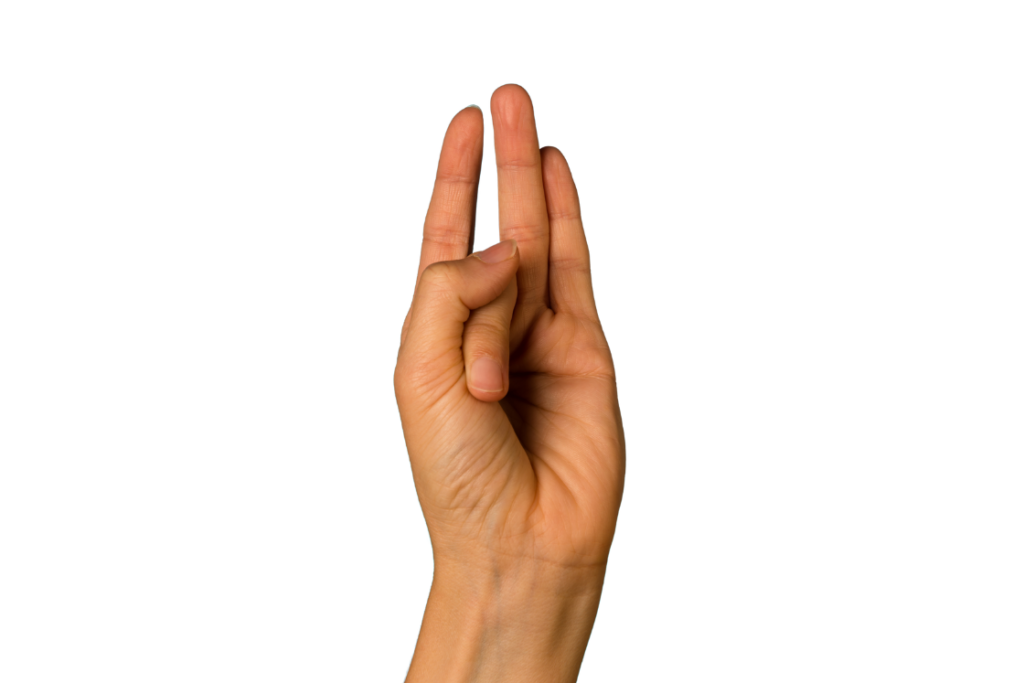
Shunya mudra is helpful for hyperthyroidism. It reduces the ether element in the body. For this mudra, cross the thumb over the middle digit of your middle finger. This contact balances the thyroid gland’s overactive hormone secretion.
To perform Shunya mudra for thyroid:
- Sit in a comfortable position with your spine straight and your shoulders relaxed.
- Bring your both hands in front of you and bend your middle finger to touch the base of your thumb.
- Use your thumb to gently press the middle finger down while keeping the other fingers extended.
- Take slow, deep breaths in through your nose and out through your mouth.
- Hold the mudra for 5-15 minutes, focusing on your breath and the sensations in your body.
- Repeat the mudra 2-3 times a day.
4. Surya Mudra
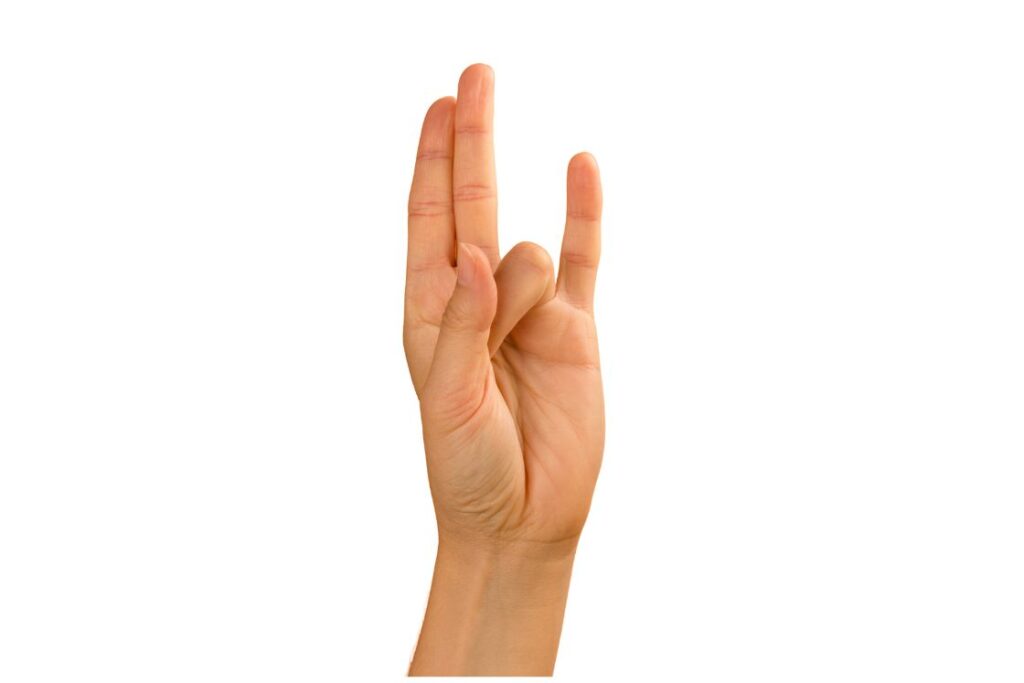
Surya Mudra is a hand gesture that helps boost the fire element (Pitta) in the body, which is closely linked to metabolism and energy. This makes it especially useful for people with hypothyroidism, where the thyroid gland is underactive and slows down the body’s functions.
By increasing internal heat and stimulating digestion and metabolism, Surya Mudra may help support healthy thyroid function and improve symptoms like fatigue, weight gain, and low energy levels
How to perform surya mudra:
- Sit in a comfortable position with your spine straight.
- Bend your ring finger and place its tip at the base of your thumb.
- Gently press the thumb over the ring finger.
- Keep the other fingers straight and relaxed.
- Practise for 10–15 minutes, twice a day for best results.
Conclusion
For hyperthyroidism, mudras that decrease the Pitta dosha or fire element in the body, such as Prithvi Mudra and Prana Mudra, can be helpful. For hypothyroidism, mudras that increase the Pitta dosha or fire element, such as Surya Mudra and Kapha Nashak Mudra, are beneficial.
Disclaimer
While some thyroid conditions may not be curable, medication and other approaches such as mudras can help manage symptoms and improve overall well-being. The information provided in this article is for educational and informational purposes only and should not be considered as a substitute for professional medical advice, diagnosis, or treatment. It’s important to work with a qualified healthcare professional to develop an effective treatment plan.





what are best mudras for autoimmune thryoid conditions like hashimoto?